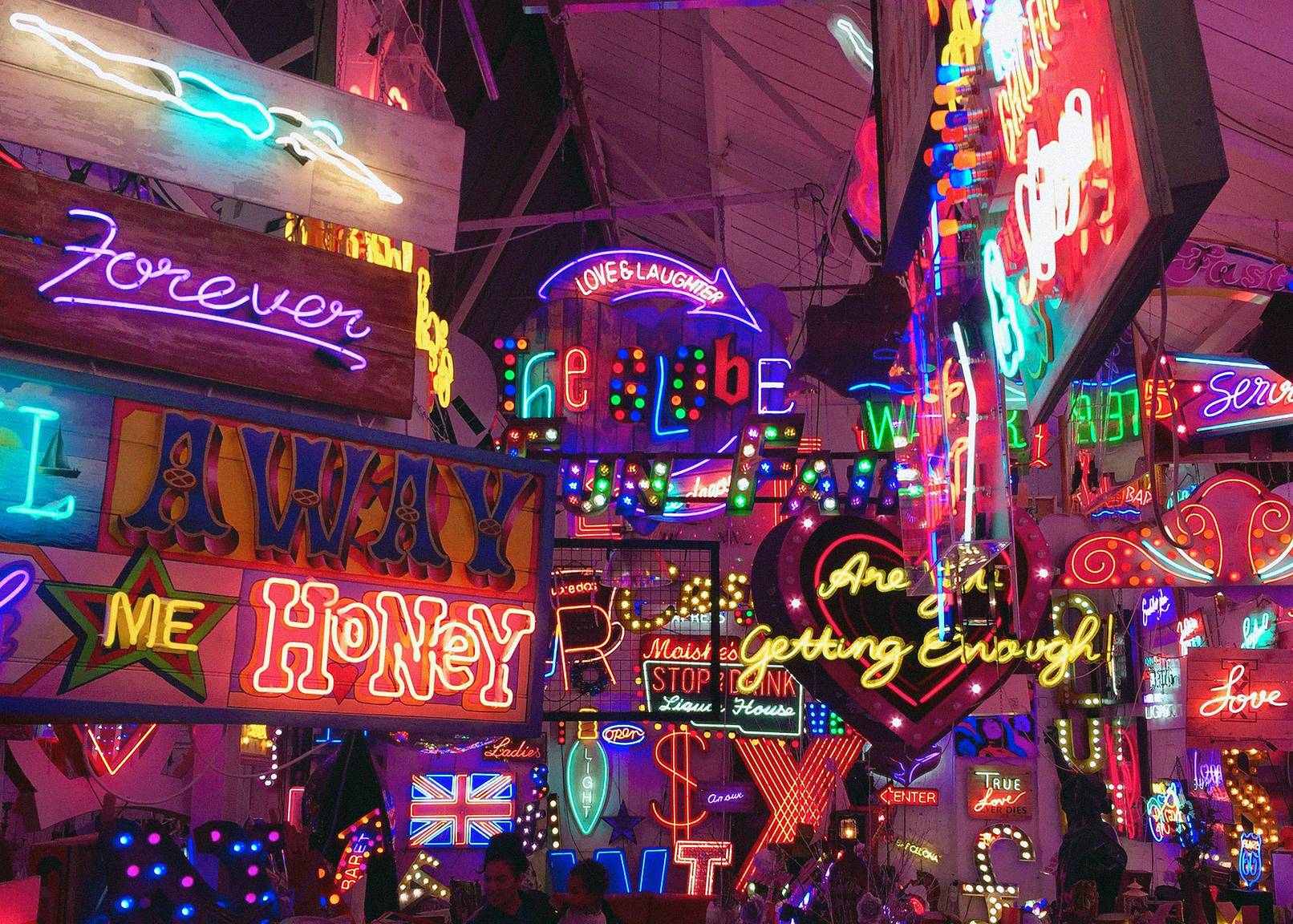"Many people find glass neon signs quite mysterious and perceive them as dangerous due to their glass construction. Through this article, we aim to introduce you to the manufacturing process of neon signs, to dispel any misconceptions you may have."
1.Introduction to Glass Neon Signs: History and Appeal
Glass neon signs as a unique blend of art, craftsmanship, and science.
These signs, crafted meticulously from glass, embody a rich history and evolution that dates back to the early 20th century.
Initially emerging as a novel means of advertising, glass neon signs quickly transcended their commercial origins, becoming iconic symbols of style and era.

Historical context and evolution of neon signs
These signs are not mere commercial tools but art pieces, blending the meticulous skills of glass bending with the scientific understanding of gases and electrical currents.
The evolution of neon signs reflects advancements in both artistic expression and technological innovation, making them enduring emblems of both past and present urban landscapes.
As we delve deeper into their creation and significance, we uncover a fascinating story of human ingenuity and creative flair.
Check how NeonsignLife® make the real glass neon signs:
2.Essential Materials and Preparations for Crafting Glass Neon Signs
Description of lead glass and its use in neon signs
In the world of glass neon signs, the primary material used is lead glass, chosen for its excellent properties in both durability and clarity, essential for the longevity and brightness of neon signs.
This specialized glass plays a crucial role in the sign's ability to withstand varying temperatures and environmental conditions, while also ensuring a vibrant display of colors.

The process of creating a neon sign begins with heating this lead glass. Various burners, each with specific characteristics, are used depending on the complexity and size of the design.
These burners, ranging from ribbon to cannon or crossfires, operate on a mixture of butane, propane, or natural gas and air. The choice of burner directly affects the precision and quality of the bends in the glass tubing.

Heating techniques and types of burners used
Each segment of the lead glass tube is heated to a precise temperature, allowing it to become malleable enough for shaping. This step is critical in the transformation of a simple glass tube into a complex and artistic neon sign.
The ability to control the heat and manipulate the glass skillfully is what sets apart expert neon sign makers, making the process as much an art form as it is a technical skill.
Use our online maker to design your unique sign,try now
3.Designing Glass Neon Signs: Artistic Planning and Creativity
Each neon sign starts as a concept, where creativity merges with practicality.

Designers consider not only the aesthetic appeal but also the technical feasibility of turning these designs into real, glowing neon signs.
In this phase, computer software becomes an invaluable tool. Modern design software allows for precise visualization and adjustments, enabling designers to experiment with various fonts, shapes, and colors.

This digital platform also aids in accurately scaling designs to fit the intended space, ensuring that the final product aligns perfectly with the client's vision.
The intersection of artistic planning and digital technology in designing glass neon signs is crucial.
It allows for the creation of complex and intricate designs that are both visually stunning and structurally sound, ensuring that each glass neon sign is not only a form of advertisement but also a piece of art.


















